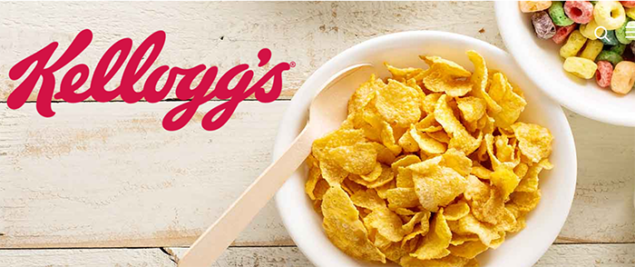Over 30,000 new products launch every year. And, according to research, over 95% fail. To avoid a flop on your next product launch, it’s essential to ensure you’re tailoring your product design, marketing efforts, and sales process to the people who will actually be interested in your product or service.
One of the best ways to ensure well-targeted marketing campaigns is segmenting your customer base. This involves breaking down your potential customers based on their various attributes. This could include things from marital status to online shopping behaviors and may even include their values or political opinions.
Not only will this give you an in-depth look at who your market might be, but it also lets you tailor every aspect of your brand and marketing messages to engage with the people who will benefit most.

What is market segmentation?
Market segmentation might sound like complex marketing jargon, but it’s not as difficult to get your head around as you might think.
According to Investopedia, market segmentation involves “aggregating prospective buyers into groups or segments with common needs and who respond similarly to a marketing action.”
In other words, it involves looking at your entire pool of potential customers and grouping (or segmenting) them based on similarities. These similarities can be pretty much anything you can think of, from age or geographical location to buying habits, interests, and life values.
Market segmentation should form part of your target market research. Helping you learn new things about your target customers that will help you communicate your products, services, brand, values, etc. in new and better ways.
- Market segment: Potential customers are divided into categories based on shared traits or characteristics.
- Target audience/market: The most likely segments to buy from or engage with your brand.
- Product positioning: What product, price, promotion, and place combinations will most effectively convert the target market.
Benefits of market segmentation
Market segmentation offers a plethora of benefits to every single part of your brand. It’s not just about marketing messages; it’s also about product development, publishing, sales, customer service, and your overall brand perception.
A survey of marketing professionals uncovered that 62% believe audience segmentation should be a top priority to enable more precisely targeted messaging. Another study by Bain & Company found 81% of executives find segmentation crucial for growing profits, and that organizations with fantastic market segmentation strategies benefit from 10% higher profits.
The benefits of market segmentation are almost limitless. But to get you started, here are some reasons you should get started with customer segmentation today:
1. Helps tailor marketing and boost engagement
Naturally, when you understand who your audience is and what they’re interested in, you’ll be able to create better marketing strategies that more appropriately communicate your brand values and the benefits of your product or service. By segmenting customers, you can cultivate highly targeted marketing campaigns that get to the crux of the matter in the language, manner, and platform your customers will appreciate the most… Saving you time, effort, and money.
An excellent example of this in practice would be if you’re selling dental tools. There’s no benefit in spending millions on a marketing campaign that targets everyone for such a niche item. Instead, focus your marketing efforts on the people (in this case, dentists) who are the most likely to buy.
Effective market segmentation will also enable you to open a dialogue with your customers as you talk about things they care about, boosting brand engagement and perception in no time!

2. Informs new product development
As we’ve mentioned, market segmentation isn’t all about marketing (although it’s undoubtedly an essential part of any effective marketing campaign). It’s also beneficial in new product development.
As you know your target market better, your brand can learn what your customers need and want from you. This can go a long way for informing new product development and identifying any gaps in the market: your customers’ unmet needs.
But market segmentation can go further than simply telling you what your customers want; it can also help you identify the trends that will benefit the brand in the long term. When you understand your customers, you’ll be quicker to identify an overnight trend vs. an opportunity for you to capitalize on.
Car manufacturers provide an excellent example of how product development is benefitted by market segmentation… Say one segment of the brand’s market is families who love outdoorsy adventures. In this case, you might develop a vehicle with a four-wheel drive, a bicycle rack, and plenty of cargo space. Another segment could be couples who like to take trips into the city. These customers would benefit from a smaller vehicle that can navigate narrower city streets and fit into tight parking spaces.
3. Reveals untapped niches
In addition to helping you discover your next best-selling product based on your customers’ needs and wants, market segmentation can also help you reveal niches and gaps in the market that you’re not currently making the most of.
For example, say you’re a clothing store that exclusively sells outdoor apparel to middle-aged women, and your market segmentation research uncovers that a large chunk of your current audience has kids. You might be missing out on some significant profits by not offering apparel for their children (or not marketing kids’ wear effectively).
Analyzing customer data can also help make your store more accessible. For example, you might be making most of your sales in a physical store but learn through market segmentation research that most of your customers prefer to shop online. This could be an indicator that your online store isn’t user-friendly or meeting the needs of your target customers.

4. Improves focus
Pretty much all the benefits of market segmentation come down to improving your company’s focus. Not only will this help establish your brand identity, but it will also help you become more memorable and a go-to for your customers’ needs.
Conversely, a brand that tries to target everyone all at once is likely to come across as generic and unmemorable. Your customers could even become confused about who your brand is and what you stand for, even if you have a quality mission statement and ethos.
But wait, what about Amazon?!
We hear you, but it’s important to remember that Bezos’ innovative platform actually started life as an online bookstore… Pretty niche if you ask us!
In addition, if you’ve ever actually shopped at Amazon.com, you’ll notice that there are plenty of personalized and focused features on the website - from recommended products to “continue browsing,” gift guides, seasonal deals, and much more - ensuring every shopper receives a personalized, focused experience.
5. Informs business decisions
We’ve mentioned how effective market segmentation can help inform new product development, but it can also be helpful when making other business decisions.
One of the best examples of this would be pricing. When pricing a new product, you want to hit that happy medium between a price that customers are happy to pay and one that maximizes your profits. Without understanding who your customers are, what budgets they’re working with, and how high their demand is, you can’t hope to hit this bullseye.
Another example would be the distribution of your products. If your target audience is younger and likes to shop online, you will naturally want to offer your products or services in an online store. You might even consider utilizing social selling to make your store as accessible as possible.

6. Increases brand loyalty
When customers feel understood by a brand, they’re more likely to stick with it and recommend it to others. But without effective market segmentation strategies in place, how can you hope to understand?
Segmentation that looks into psychographic aspects will be the most useful here. This covers things like beliefs, values, and priorities.
For example, suppose one of your identified groups cares strongly about the environment. In that case, it might be worth making a big deal about any sustainable practices you put into place to reassure them that they’d be making a responsible choice by shopping with you. A trick that many of the best Shopify stores utilize!
You’re also more likely to be able to create offers, promotions, or special events that resonate with your customers, providing “irresistible” incentives for a return visit. You could even use your research to inform things like your loyalty program to ensure they offer the perks that your customers care about. Increasing customer retention, loyalty, and lifetime value in one fell swoop!
7. Helps your brand stand out
With so much competition out there, it can be challenging to make your small business stand out from the crowd. With effective market segmentation, you can allow your customers to see the true value of shopping with you vs. anyone else. It will help you stand out in their minds and ensure you’re a more memorable brand that clearly understands and appreciates who your customers are, what they need, and how they prefer to communicate.

Five types of market segmentation
There are multiple types of market segmentation you can use in the business world, and the best one for your brand might not be the one your competitors are using. However, most marketers agree there are five main types of market segmentation; these are demographic, firmographic, psychographic, behavioral, and geographic.
1. Demographic segmentation
Demographic segmentation is probably the most common and obvious way to break down a potential market. It involves categorizing people based on observable differences, such as:
- Age
- Gender
- Education
- Occupation
- Marital status
- Income
- Religion
- Ethnicity
While this is a fantastic starting point for segmenting a market, it’s not always suitable as the only type of market research you complete. You should always use Demographics alongside other segmentation types and be sensitive in how you collect the information and the questions you’re asking.
Some good examples of how you can use demographic data include:
- Alcohol. When marketing alcohol, you don’t want to waste your time/money marketing to those under 21, so “age” is essential.
- Beard care products. These products will be marketed to men. An exception to this might be around the holidays, where marketing to women shopping for their male loved ones could be beneficial.
- Food delivery services. There are many reasons you might utilize a food delivery service, and understanding your audience’s demographics will help tailor your marketing appropriately. For example, students will be having food delivered for a very different reason to top-level employees who have no time to cook.

2. Firmographic segmentation
“Firmographics are to firms and investors as demographics are to people.”
B2B firms use Firmographic segmentation to help identify the firms and businesses that would most benefit from their products/services. It’s similar to investigating the demographics of customers and can include aspects such as:
- Turnover and profit
- Industry
- Size of business
- Number of employees
- Location(s)
- Ownership (public, private, government, etc.)
- Organizational trends
- Average sales cycle
3. Psychographic segmentation
Psychographic segmentation is a bit like a holistic version of demographic data. But instead of considering the physical or observable attributes of a customer, it looks more into what matters most to them. Some examples of psychographic data might include a customer’s:
- Hobbies
- Interests
- Values
- Life goals
- Beliefs
- Lifestyle
- Personality traits
In other words, demographic data might tell you your customer is a young man; psychographic segmentation lets you know this customer loves bowling, cares about the environment, and wants to get married and have children one day.

4. Behavioral segmentation
Looking at how your customers behave and engage with your brand will enable you to create messaging and product placement that benefits these behaviors. It’s relatively simple to establish your customers’ online habits with tools such as Google Analytics or even via your website host. For physical stores, this might take a bit more analysis and research.
- Spending habits
- Conversion rates vs. cart abandonment frequency
- Browsing patterns
- Brand interactions
- Loyalty
- Product ratings and reviews
- Number of website visits
Analyzing your market’s behavioral habits is particularly beneficial for product placement. It can help you streamline your website or optimize the layout of your store, figure out why carts are abandoned, and help you figure out the best places to advertise.
5. Geographic segmentation
It can be argued that geographic data is just another type of demographic market segmentation, but we believe it deserves a category all of its own. That’s because geographic data can uncover a considerable amount of information about your customers, from shopping habits to budget and even what everyday language/slang will be most engaging.
When looking at geographic data, you can go as wide or narrow as you like. Consider areas like:
- Country
- State
- City
- Zipcode
- Neighborhood (suburban vs. urban, for example)
- Language
- Population density
- Economic status
- Regional climate
An excellent example of using geography to your advantage would be for apparel or footwear stores. A customer in a cooler climate might be interested in your warm boots or coats, whereas someone in Florida is far more likely to be shopping for sandals and beachwear. By understanding where your customers live, you can tailor your marketing strategies to best suit their needs.

How to segment a market
Now you know what a market segment is and have an idea of which type of market segmentation your brand should be focusing on, it’s time to identify the different groups your customers belong to.
- Define your market: Is there a need for what you’re selling? How large is your pool of potential customers? What is your current market position?
- Segment your market: Which types of segmentation do you want to use? It’s often worth combining a few to get a detailed insight into your target market.
- Understand your market: You can’t tailor marketing, product development, or anything else to an audience you don’t understand. Conduct research surveys, focus groups, polls, and other market research exercises to determine what makes your audience tick. It’s essential to use both quantitative and qualitative questions to uncover as much data as possible.
- Look for analytical information: This is where cookies come in! Use third-party data to supplement the responses you’ve received from your target audience. This will look at buyer behavior, how long a user spends on your website, etc.
- Create your segments: Analyse the results of your target market research to create your buyer and audience personas, taking into account the customer segments that are more relevant to your brand.
- Build your marketing strategies: Use your buyer personas to develop marketing strategies that relate to the demographics, behaviors, interests, values, etc., of your target customers.
- Test your marketing strategy: Once you’ve interpreted your target market research and responses and have developed a marketing strategy that appeals to the buyer personas you’ve identified, test your findings using conversion tracking. If the results are disappointing, you might need to reassess the marketing strategy or take another look at your segments to ensure you’re communicating effectively to the right audience.
Market segmentation examples
1. Volkswagen
The Volkswagen group is an excellent example of how market segmentation allows a brand to appeal to very different groups of people.
When you think of vehicles like the Volkswagen Polo, you probably think of words like “robust,” “hatchback,” and “affordable.” But you might not realize that the Volkswagen group is responsible for producing brands including Audi, Lamborghini, Porsche, and even Ducati!
Operating in multiple countries worldwide, Volkswagen is a fantastic brand for demonstrating how different market segments can create a successful business strategy.

2. Coca-Cola
When it comes to understanding a broad customer base, few brands are as effective as Coca-Cola. With countless products available in almost every country worldwide, Coca-Cola uses every type of market segmentation to create products that appeal to every individual.
From recyclable packaging to varying price points and even caffeine-free cola vs. energy drinks (with different labels and color schemes!), plus various seasonal offers (is it even Christmas until the Coca-Cola van appears?), there’s very little this brand hasn’t considered.

3. Kellogg’s
Kellogg’s might seem like a straightforward cereal brand, but they effectively market to almost every segment simultaneously, which is an impressive feat! From tasty Pop-Tarts to health-conscious Special K, kid-friendly Mini-Wheats to classic Cornflakes… Kellogg’s utilizes market segmentation to identify different groups based on demographics, behaviors, and psychographic segmentation.
The brand even uses geographic segmentation to ensure each breakfast item matches customers’ appetites based in different areas. Don’t believe us? If you get a chance to visit Europe, take a good look at the Kellogg’s cereals available. You might be surprised how different they are from the US options!

Markets change; your market segmentation strategy should, too!
Like any marketing strategy, one of the most important things to consider when identifying your market segments is that they may change as time goes on. Therefore, it’s vital to be flexible with your market segment research and be prepared to update it as customer behaviors, priorities, or preferences change.
The changes brought on by Covid19 are an obvious example of how buyer behaviors can change swiftly, but seasonal considerations should also come into play.
For example, Christmas, Hanukkah, and even Black Friday can dramatically affect a shopper’s likelihood to buy, and customers may be drawn in by different marketing methods than usual.
When you fully understand your customers and target audience, however, making the necessary changes as time goes on will become easier and more streamlined. Regularly asking your customers what they want and maintaining an engaging dialogue with them will ensure you’re set up for success no matter what business decision you need to make.
FAQ
What do you mean by market segmentation?
Market segmentation is one of the best ways to understand your audience. It refers to the process of dividing consumers into distinct categories based on aspects such as age, gender, physical location, income, ethics, priorities, aspirations, values, family size, or anything else that’s relevant to your brand.
What are the four main market segments?
- Demographic: Observable differences/similarities, including age, gender, family size, household income, employment status, etc.
- Firmographic: Like demographic market segmentation for B2B companies.
- Psychographic: Considers the values, priorities, beliefs, etc., of the target audience.
- Behavioral segmentation: How customers behave both online and in physical stores.
Geographic market segmentation is also a valuable market segmentation option. Although this can come under demographic segmentation, many marketers would look at the geographics of their target audience as a category in itself.
What are the five benefits of market segmentation?
There are many benefits to analyzing market segments as part of your business plan. The top five would include:
- It helps you create highly tailored and engaging advertisements.
- Helps inform new product development and identify potential gaps in the market.
- It makes your brand more memorable and ensures you stand out from the competition.
- Increases brand loyalty and customer lifetime value.
- Boosts focus and ensures you’re addressing your customers’ needs with every business decision made.




